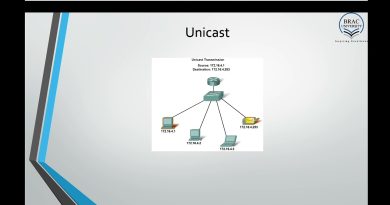What is IPv4 ADDRESS EXHAUSTION? What does IPv4 ADDRESS EXHAUSTION mean?
✪✪✪✪✪ http://www.theaudiopedia.com ✪✪✪✪✪
What is IPv4 ADDRESS EXHAUSTION? What does IPv4 ADDRESS EXHAUSTION mean? IPv4 ADDRESS EXHAUSTION meaning – IPv4 ADDRESS EXHAUSTION definition – IPv4 ADDRESS EXHAUSTION explanation.
Source: Wikipedia.org article, adapted under https://creativecommons.org/licenses/by-sa/3.0/ license.
SUBSCRIBE to our Google Earth flights channel – https://www.youtube.com/channel/UC6UuCPh7GrXznZi0Hz2YQnQ
IPv4 address exhaustion is the depletion of the pool of unallocated IPv4 addresses. Because there are fewer than 4.3 billion addresses available, depletion has been anticipated since the late 1980s, when the Internet started to experience dramatic growth. This depletion is one of the reasons for the development and deployment of its successor protocol, IPv6.
The IP address space is managed globally by the Internet Assigned Numbers Authority (IANA), and by five regional Internet registries (RIR) responsible in their designated territories for assignment to end users and local Internet registries, such as Internet service providers. The main market forces that accelerated IPv4 address depletion included the rapidly growing number of Internet users, always-on devices, and mobile devices.
The Internet Engineering Task Force (IETF) created the Routing and Addressing Group (ROAD) in November 1991 to respond to the scalability problem caused by the classful network allocation system in place at the time. The anticipated shortage has been the driving factor in creating and adopting several new technologies, including network address translation (NAT), Classless Inter-Domain Routing (CIDR) in 1993, and IPv6 in 1998. IPv6, the successor technology to IPv4 which was designed to address this problem, supports approximately 3.4×1038 network addresses.
Although the predicted depletion was already approaching its final stages as of 2008, most providers of Internet services and software vendors were just beginning IPv6 deployment.
The top-level exhaustion occurred on 31 January 2011. Four of the five RIRs have exhausted allocation of all the blocks they have not reserved for IPv6 transition; this occurred on 15 April 2011 for the Asia-Pacific, on 14 September 2012 for Europe, on 10 June 2014 for Latin America and the Caribbean, and on 24 September 2015 for North America. Individual ISPs still had unassigned pools of IP addresses, and could recycle addresses no longer needed by their subscribers. Each exhausted its pool of available addresses at different times.
ipv4



